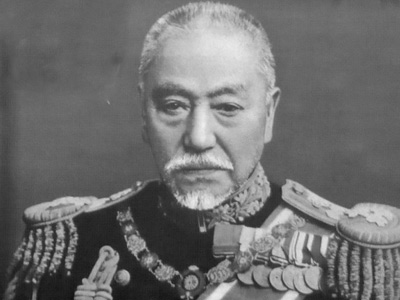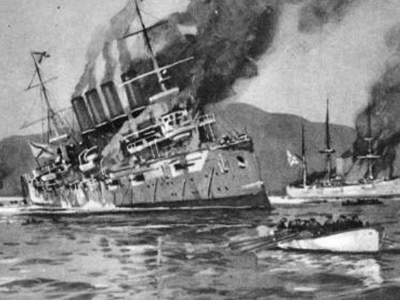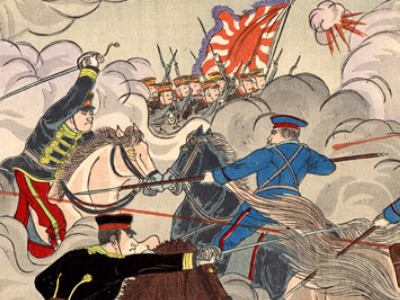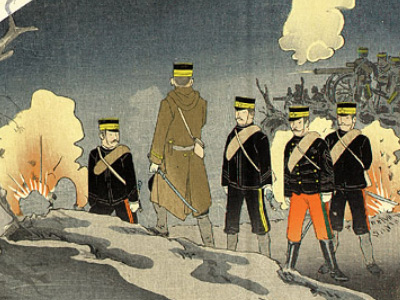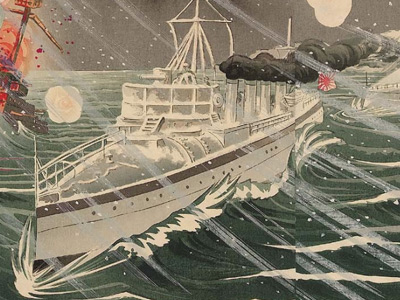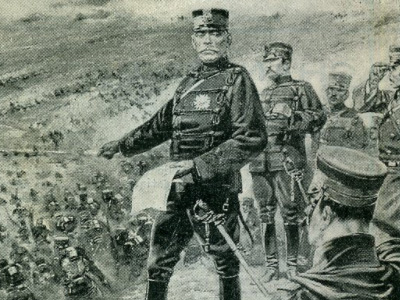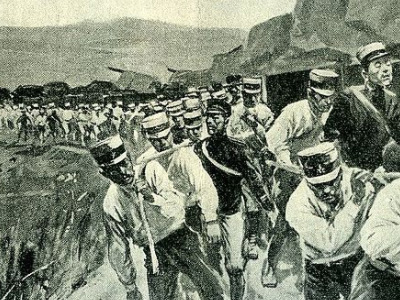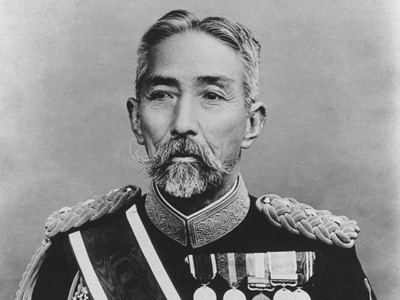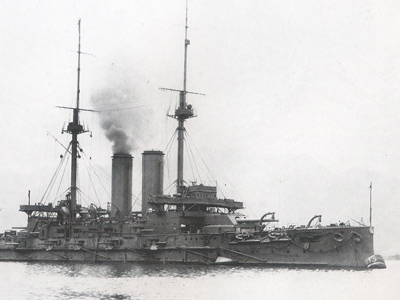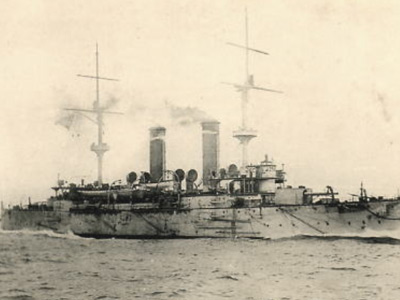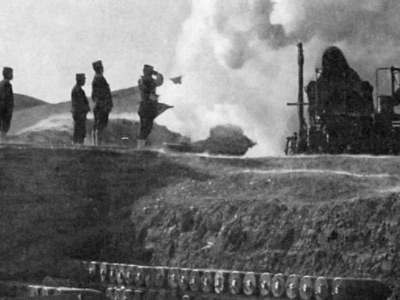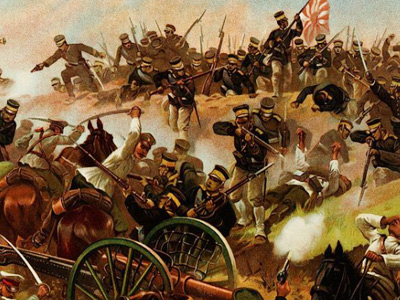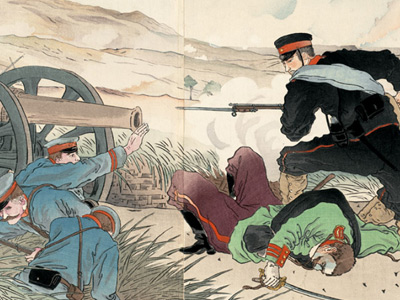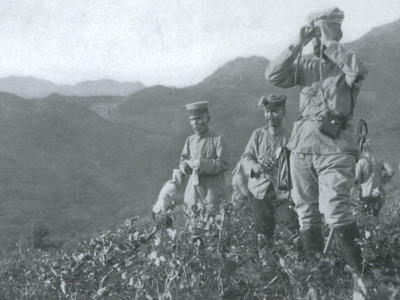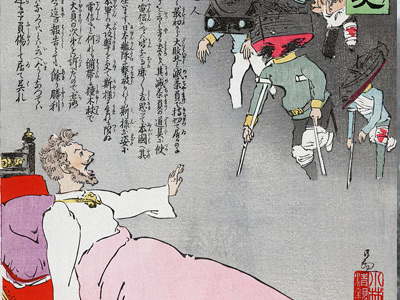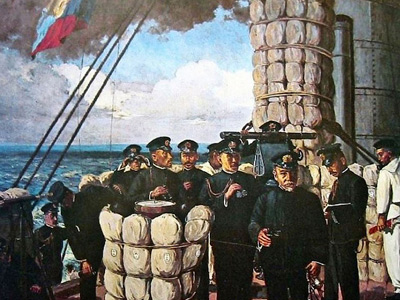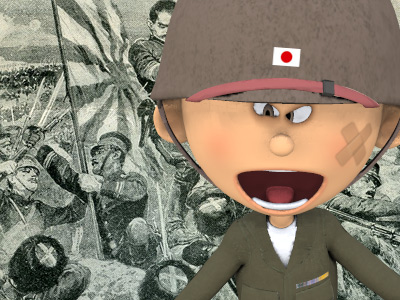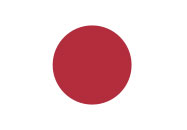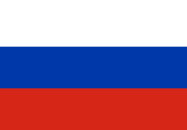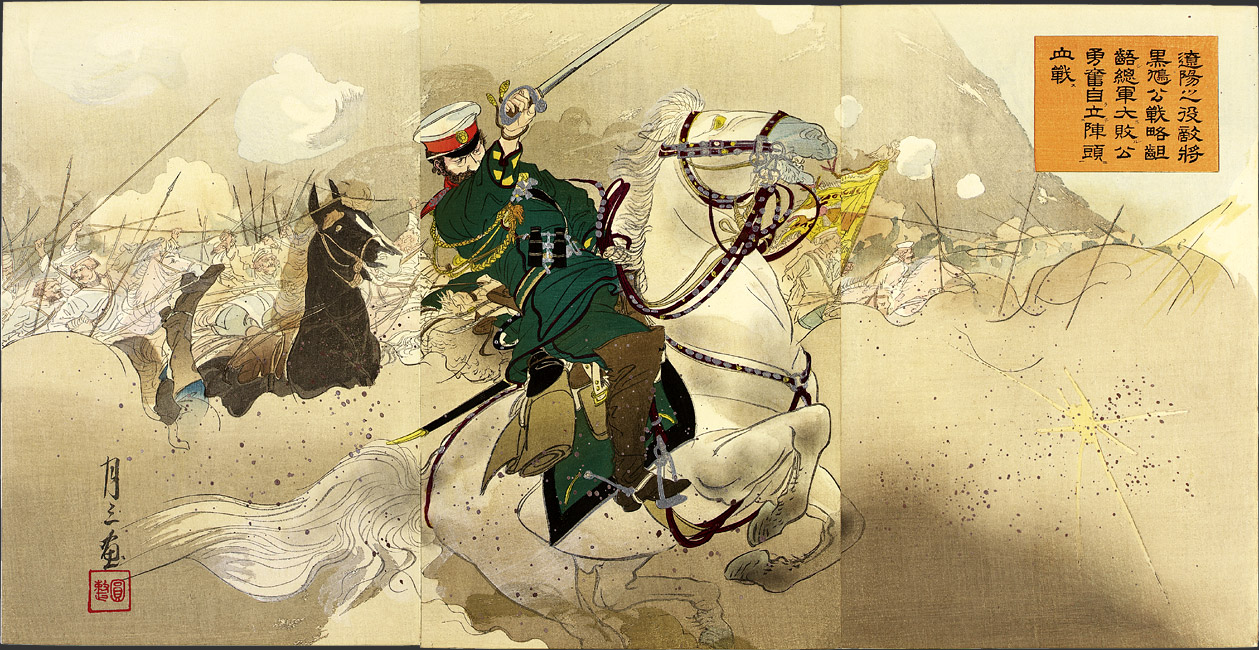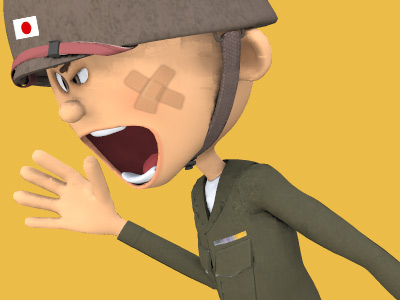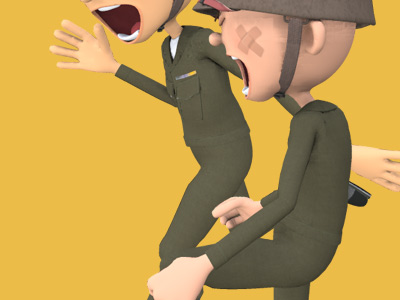Russo-Japanese War (1904–1905)
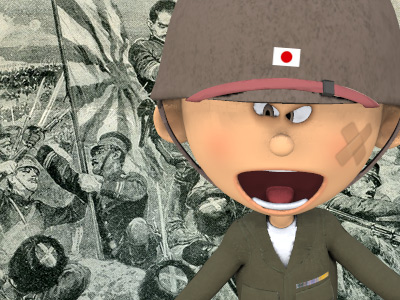
Battle of Mukden
The Battle of Mukden (奉天会戦 Hōten kaisen), one of the largest land battles to be fought before World War I and the last and the most decisive major land battle of the Russo-Japanese War, was fought from 20 February to 10 March 1905 between Japan and Russia near Mukden in Manchuria. The city is now called Shenyang, the capital of Liaoning province in China.
The Russian Russian Empire was an empire and the final period of the Russian monarchy from 1721 to 1917, ruling across large parts of Eurasia. The rise of the Russian Empire coincided with the decline of neighbouring rival powers: the Swedish Empire, the Polish–Lithuanian Commonwealth, Qajar Iran, the Ottoman Empire, and Qing China. Russia remains the third-largest empire in history, surpassed only by the British Empire and the Mongol Empire. forces, numbering more than 340,000, under General Alexei Nikolajevich Kuropatkin, fought the attacking Imperial Japanese Army forces numbering more than 270,000, led by Marshal Marquess Ōyama Iwao. Involving 610,000 combat participants and 164,000 combatant casualties, it was the largest modern-era battle fought prior to World War I
Russian Empire was an empire and the final period of the Russian monarchy from 1721 to 1917, ruling across large parts of Eurasia. The rise of the Russian Empire coincided with the decline of neighbouring rival powers: the Swedish Empire, the Polish–Lithuanian Commonwealth, Qajar Iran, the Ottoman Empire, and Qing China. Russia remains the third-largest empire in history, surpassed only by the British Empire and the Mongol Empire. forces, numbering more than 340,000, under General Alexei Nikolajevich Kuropatkin, fought the attacking Imperial Japanese Army forces numbering more than 270,000, led by Marshal Marquess Ōyama Iwao. Involving 610,000 combat participants and 164,000 combatant casualties, it was the largest modern-era battle fought prior to World War I World War I, also known as the First World War, or the Great War, was a global war originating in Europe that lasted from 28 July 1914 to 11 November 1918. More than 70 million military personnel, including 60 million Europeans, were mobilized in one of the largest wars in history. The war drew in all the world's economic great powers, assembled in two opposing alliances: the Allies versus the Central Powers of Germany and Austria-Hungary. View World War I », and possibly the largest battle in world history up to that point.
World War I, also known as the First World War, or the Great War, was a global war originating in Europe that lasted from 28 July 1914 to 11 November 1918. More than 70 million military personnel, including 60 million Europeans, were mobilized in one of the largest wars in history. The war drew in all the world's economic great powers, assembled in two opposing alliances: the Allies versus the Central Powers of Germany and Austria-Hungary. View World War I », and possibly the largest battle in world history up to that point.
Background
Following the Battle of Liaoyang (24 August to 4 September 1904), Russian forces retreated to the river Sha Ho south of Mukden and regrouped. From 5 October 1904 to 17 October 1904, during the Battle of Shaho, the Russians unsuccessfully counter-attacked, but managed to temporarily slow the Japanese advance.
A second Russian counter-offensive, the Battle of Sandepu, fought from (25 – 29 January 1905) was likewise unsuccessful.
The fall of Port Arthur to General Nogi freed up the Japanese 3rd Army, which advanced north to reinforce the Japanese lines near Mukden in preparation for an attack.
By February 1905, the manpower reserves of the Japanese army had been drained. With the arrival of General Nogi's Third Army, Japan's entire fighting strength was concentrated at Mukden. The severe casualties, bitter cold climate, and approach of the Russian Baltic Fleet created pressure on Marshal Ōyama to effect the complete destruction of the Russian forces, rather than just another victory from which the Russians could withdraw further into Manchuria.
Disposition of Forces
The Russian line to the south of Mukden was 90 miles (140 km) long, with little depth and with a central reserve. On the right flank, in flat ground, was the Second Manchurian Army under General Baron von Kaulbars (who had replaced the unfortunate General Oscar Gripenberg). In the center, holding the railway and the highway was the Third Manchurian Army under General Baron von Bilderling. The hilly terrain on the east flank was held by the First Manchurian Army under General Nikolai Linevich. This flank also held two-thirds of the Russian cavalry, under General Paul von Rennenkampf. General Kuropatkin had thus disposed his forces in a purely defensive layout, from which it would be difficult to impossible to execute an offensive without opening a major gap in the lines.
On the Japanese side, the Japanese First Army (General Kuroki) and Japanese Fourth Army (General Nozu) advanced to the east of the rail line, and the Japanese Second Army (General Oku) to the west. General Nogi's Japanese Third Army was kept concealed behind the 2nd Army until the start of battle. A newly formed Japanese Ōryokukō (Yalu River) Army under General Kawamura provided a major diversion on the Russian eastern flank. The Yalu River Army was much under strength, and consisted only of the IJA 11th Division (from Port Arthur) and reservists. Despite that it was technically not under the Japanese Manchurian Army but directly under Imperial General Headquarters to attack Primorsky Krai politically, the division was substantially under Manchuria HQ under the commander's decision.
General Kuropatkin was convinced that the main Japanese thrust would come from the mountainous eastern side, as the Japanese had proven themselves effective in such terrain, and the presence of the former 3rd Army veterans from the 11th Division in that area reinforced his convictions.
Field Marshal Ōyama's plan was to form his armies into a crescent to encircle Mukden, cutting off the possibility of Russian escape. He was explicit in his orders that combat within the city of Mukden itself was to be avoided. All during the war, the Japanese had pursued a meticulous civil affairs policy aimed at avoiding civilian casualties and keeping the Chinese populace on their side – a stark contrast with the previous First Sino-Japanese War and subsequent Second Sino-Japanese War.
The Battle
The battle opened with the Japanese 5th Army attacking the left flank of the Russian forces on 20 February. On 27 February 1905 the Japanese 4th Army attacked the right flank, while other Japanese forces also attacked the Russian front lines. On the same day, the Japanese 3rd Army began its movement in a wide circle northwest of Mukden.
By 1 March 1905, action on the eastern and center fronts was largely static. The Japanese had made small advances but under heavy casualties. However, by 7 March, General Kuropatkin began withdrawing forces from the eastern front to counter the Japanese 3rd Army's moves on the western flank of Mukden, and was so concerned about General Nogi's movements that he decided to lead the counterattack himself. The shifting of forces from east to west was not well coordinated by the Russians, causing the 1st and 3rd Manchurian Armies to all but disintegrate into chaos. Then Kuropatkin decided to withdraw his troops north towards Mukden to face the Japanese forces head-on on the city's southwest and at the banks of the Hun River in the city's southeast.
Then Field Marshal Ōyama seized the chance he had been waiting for, and his orders to "attack" were changed to "pursue and destroy". Luck was further with the Japanese due to the late thaw in the weather. The Hun River, guarded by the Russian left flank commanded by Major General Mikhail Alekseyev, remained frozen, and was not an obstacle to the Japanese attack. However, as they crossed the river, the Japanese attack was hampered when they encountered stiff resistance and heavy artillery fire coming from the Russians, now commanded by General Paul von Rennenkampf, resulting in yet more heavy casualties, but after heavy fighting had succeeded in taking the northern bank of the river, causing the Russian defense lines defending the bank to collapse and the far edge of their left flank to be partially cut off from the rest of the main body of Kuropatkin's army. At the same time a salient was formed just 15 kilometers west of Mukden, enabling the Japanese to totally encircle the Russians on their right flank in the process.
All but encircled and with no hope for victory, General Kuropatkin gave the order to retreat to the north at 18:45 on 9 March. The Russian withdrawal was complicated by General Nozu's breach through Russian rearlines over the Hun River, and quickly turned into a disorganized rout. The panicked Russian forces abandoned their wounded, weapons and supplies in their flight north towards Tiehling.
At 10:00 AM on 10 March, Japanese forces occupied Mukden. After they occupied Mukden the Japanese continued their hard-driven pursuit of the Russians, but this was hampered when Ōyama knew that his army's supply lines were stretching too thin; however, he continued the pursuit of the enemy, though in a lazy, slow manner. The pursuit was stopped 20 kilometers short of Mukden, but the Russians were already fleeing farther north from Tiehling towards the Sino-Russian border at a fast pace, and the battle was over with the Japanese as the victor.
Conclusion
Russian casualties amounted to nearly 90,000. The Russians had also lost most of their combat supplies as well as most of their artillery and heavy machine guns. Fearing further Japanese advances, General Kuropatkin ordered that the town of Tieling be put to the torch, and marched his remaining men 10 days further north to a new defense line at Hspingkai (modern Siping, Jilin province, China), where General Mikhail Batyanov (who replaced General von Bilderling as commander of the Third Manchurian Army) organized defenses against a possible renewed Japanese offensive. However, Kuropatkin did not hold this line for very long, and soon organized a complete withdrawal of Russian forces from the region. The Japanese forces suffered 75,000 casualties which included a higher percentage of killed and wounded over the Russians. The Japanese captured 58 artillery pieces.
No serious fighting on land occurred after this battle as both Russian and Japanese armies were exhausted from the conflict.
Aftermath
With the defeat of the Russian Manchurian Army in Mukden, the Russian forces were driven out of southern Manchuria for good. However, with problems concerning its overstretched supply lines, the Japanese army failed to destroy the Russian forces stationed in the region completely and Kuropatkin's forces, though severely demoralized, short of supplies and in the verge of disintegration, were still largely intact. But the battle of Mukden was decisive enough to shatter the Russians' morale and, with the unfinished Trans-Siberian railroad now under Japanese hands, undermined the tsarist government's war effort. The final, decisive battle of the war would be eventually fought on the waters of Tsushima.
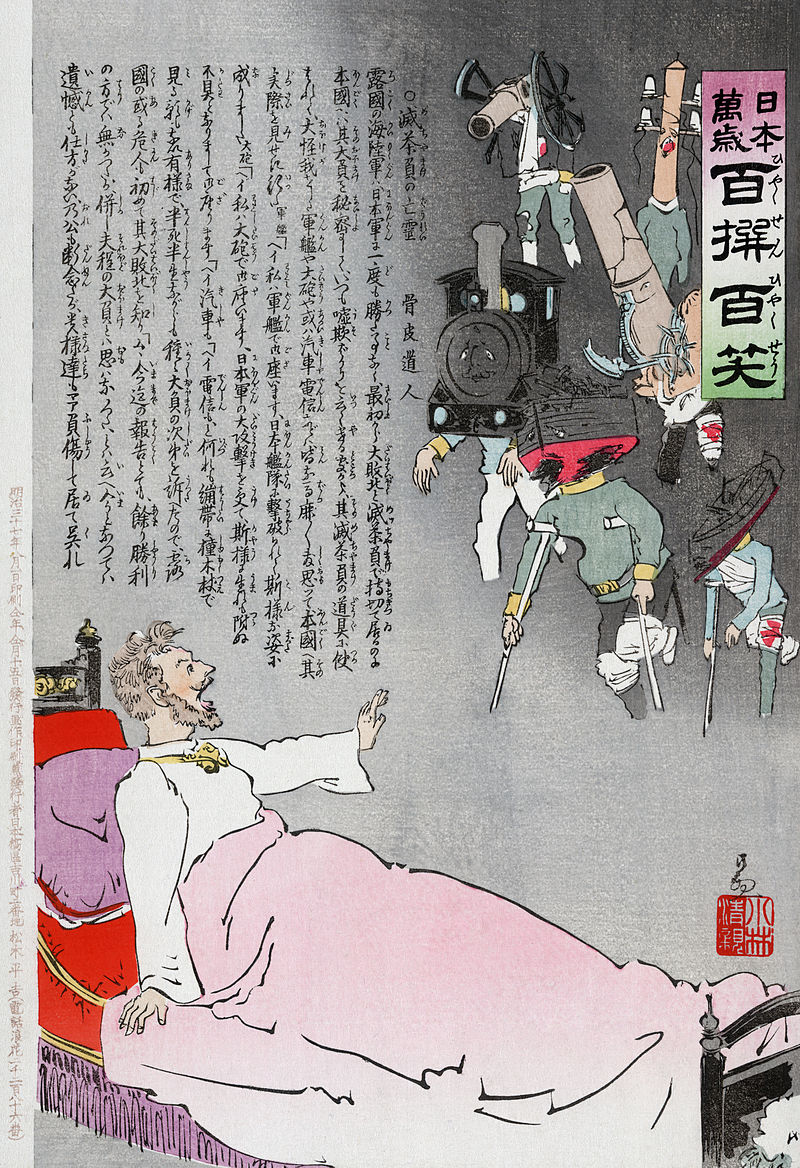
Japanese propaganda of the war: woodcut print showing Tsar Nicholas II waking from a nightmare of the battered and wounded Russian forces returning from battle. Artist Kobayashi Kiyochika, 1904 or 1905
The victory shocked the imperial powers of Europe, as they thought that although the Russians had more manpower and material, the Japanese proved overwhelming throughout the battle. The battle became a proof that the Europeans were not invincible and could be even decisively outmatched in battle. Two Russian generals, Aleksandr Samsonov and Paul von Rennenkampf, the future commanders of two armies which would fight in the even more disastrous Battle of Tannenberg in World War I, began to loath each other as von Rennenkampf, the commander of the Russian left flank during the battle, was accused by Samsonov of failing to assist him during the fighting, and Samsonov later publicly complained against von Rennenkampf. But it shocked Tsar Nicholas II more when news of the defeat reached the palace in St. Petersburg; it proved to them that a relatively tiny Asian empire, like Japan The Empire of Japan, also known as the Japanese Empire or Imperial Japan, was a historical nation-state and great power that existed from the Meiji Restoration in 1868 until the enactment of the post-World War II 1947 constitution and subsequent formation of modern Japan. Economic and political turmoil in the 1920s led to the rise of militarism, nationalism and totalitarianism eventually culminating in Japan's membership in the Axis alliance. , could defeat a powerful and huge European empire. The tsarist government was irritated over the incompetence and clumsiness of their commanders during the battle, and the government was very frustrated that it again shifted its imperialist policies towards the Balkan region after the war, eventually becoming a precursor for the First World War.
The Empire of Japan, also known as the Japanese Empire or Imperial Japan, was a historical nation-state and great power that existed from the Meiji Restoration in 1868 until the enactment of the post-World War II 1947 constitution and subsequent formation of modern Japan. Economic and political turmoil in the 1920s led to the rise of militarism, nationalism and totalitarianism eventually culminating in Japan's membership in the Axis alliance. , could defeat a powerful and huge European empire. The tsarist government was irritated over the incompetence and clumsiness of their commanders during the battle, and the government was very frustrated that it again shifted its imperialist policies towards the Balkan region after the war, eventually becoming a precursor for the First World War.
HISTORY
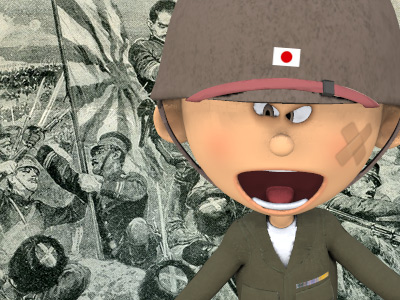
RESOURCES
This article uses material from the Wikipedia articles "Russo-Japanese War" and "Battle of Mukden", which is released under the Creative Commons Attribution-Share-Alike License 3.0.
© Stories Preschool. All Rights Reserved.
